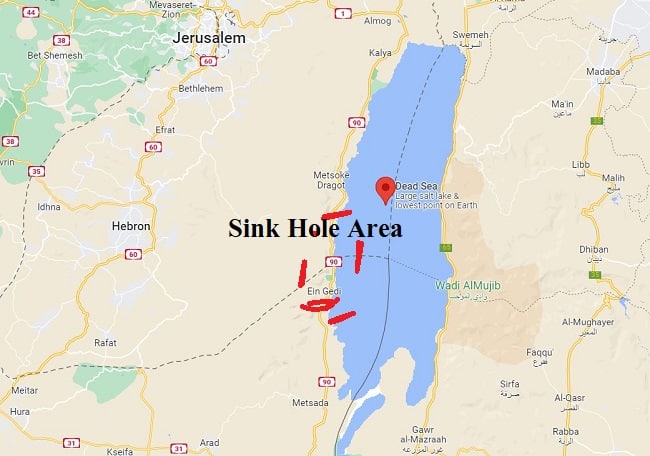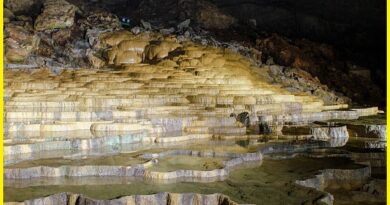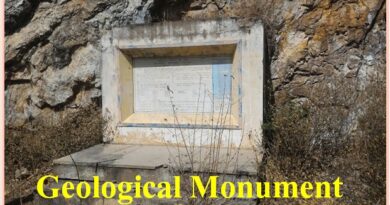Dead Sea Sinkholes Israel-The Structure that forms By Unusual process
Dead Sea Sinkholes
The Dead Sea sinkholes in Israel are caused by the rapid and ongoing depletion of the Dead Sea, which has resulted in the collapse of the land above the underground salt layers. The sinkholes pose a serious threat to infrastructure and tourism in the area. Efforts are being made to address the issue, such as by increasing the flow of water from the Jordan River into the Dead Sea and exploring ways to pump salt from underground to the surface. Dead sea sinkholes map- The maps show the locations of Dead Sea sinkholes. The geological map of the area are often produced by government agencies, research institutions, or environmental organizations, and they typically use data from satellite imagery, aerial surveys, and field observations to identify and locate the sinkholes.

Dead sea sinkholes history
The formation of sinkholes at the Dead Sea has been an ongoing natural process, but their frequency and severity have increased in recent decades. The Dead Sea is a hypersaline lake that is fed by the Jordan River and has been receding at a rapid pace due to human activities such as water diversion and climate change. The Dead Sea’s water level has declined over 25 m from 1939 to 1999 it’s now shrunk by about one-third of its mid-1960s volume. These swallow holes or sinkholes form when a subterranean salt layer, is buried about 20–70 m beneath the surface that once bordered the sea and then dissolved by underground fresh water.
Also, read- Makhtesh Ramon Crater and Nature Reserve Isreal
As the sea level drops, groundwater from adjacent aquifers flows in to replace the retreating seawater. This freshwater meets a layer of rocky salts and dissolves it, creating an underground void. The sinkholes spread roughly parallel to the fault system associated with the Dead Sea Transform rift valley. The first sinkholes at the Dead Sea were reported in the 1970s, but the problem has since worsened, with thousands of sinkholes now present in the area. The sinkholes pose a significant threat to infrastructure and tourism, as well as the environment and wildlife. Efforts are being made to address the issue and find sustainable solutions.

Dead sea sinkholes canal
There have been proposals to build a canal from the Red Sea to the Dead Sea in order to help address the problem of the Dead Sea sinkholes. The canal would bring water from the Red Sea, which would be desalinated and used for drinking water, and the brine leftover from the desalination process would be pumped into the Dead Sea, increasing its water levels and slowing down the sinkhole formation. However, the proposed canal has raised concerns about potential environmental impacts, and there are still ongoing discussions and studies to determine its feasibility and potential consequences.
Dead sea sinkholes wildlife
The formation of sinkholes can have negative impacts on wildlife in the surrounding areas. The sinkholes can disrupt the natural water flow and drainage patterns, which can affect the availability of water for plants and animals. Additionally, the sinkholes can create hazardous traps for wildlife, and some animals may become stuck or trapped in the sinkholes. Efforts are being made to address the issue and minimize the impacts on wildlife, such as by rehabilitating affected areas and restoring natural water flows. However, the ongoing depletion of the Dead Sea and the formation of sinkholes remains a significant environmental concern.

How to Reach The sinkholes
Access to the sinkholes in Israel can be limited due to safety concerns, as some areas may be unstable and potentially dangerous. It’s best to visit the area with a guided tour or a local expert who can provide information on safe and accessible areas. The sinkholes can be reached by car or bus from nearby cities such as Jerusalem or Tel Aviv, and there are also organized tours available that include transportation and guided visits to the sinkhole areas. It’s important to follow any posted signs and guidelines and to stay on designated paths or trails to avoid the risk of injury or damage to the environment.




Pingback: List of 8 Tallest Mountains in The World - Geotourism